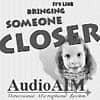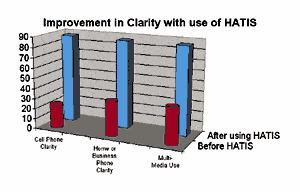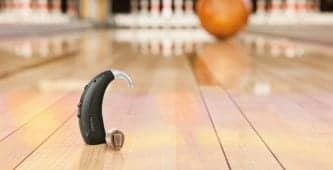Telephones have been used for over a century and have become an integral communication device in people’s lives. During the 1990s cell phone use burgeoned, and this trend has only increased the versatility and need for the telephone.
People who are hearing impaired have been limited in their ability to share in this advanced technological boom. Traditionally, they have found that using a telephone can be a frustrating experience.1 Federal legislation was enacted in 1982 requiring that corded telephones be compatible with hearing instruments. The legislation specified that the electroacoustical energy of a telephone must have sufficient induction energy strength for use with hearing instruments.1 The American Disabilities Act of 1990 (ADA) also mandated that telephones be compatible for hearing instrument use.
During the 1990s, hearing instrument manufacturers brought both programmable and digital hearing aids to the market. Some of these devices have had programmable telecoils or separate programs/ memories specifically designed for telephone use (ie, an acoustic setting for telephones). However, even with these advancements, telecoil use had still been difficult for the end user, and it’s not uncommon for emotions to run deep on this issue for both consumers and hearing care professionals.2-6 Particularly when a patient’s hearing loss becomes more severe, their success on the telephone decreases.1 Not surprisingly, this has resulted in frustration for everyone involved.
Telecoils have been offered in both BTE and ITE (usually full shell) hearing aids for many years. Hearing aids equipped with a telecoil have an electromagnetic coil of wire that can be activated by flipping a switch, pressing a button, or even holding a phone close to the device. The microphone on the hearing aid is almost always turned off in the telecoil setting, but there are devices that have the capability to have both the microphone and telecoil on at the same time.
Study Methods
This field study was designed to explore if Hatis assistive listening systems would improve hearing in the following situations: cell phone, home or office telephone use, and CD player, computer or stereo devices. The study’s subjects consisted of 80 patients who were experienced hearing aid users. Each participant was asked questions before using the test devices and then 30 days later. All of the users had a telecoil on their BTE hearing aid(s). In terms of age, 3% of the respondents were 18 years old or younger; 18% were ages 19-34; 43% were ages 35-54; 26% were ages 55-69, and 10% were over age 70.
The System
Most products in the Hatis system resemble a very thin BTE hearing aid. It has a patented electromagnetic coil of wire that couples with the telecoil on a hearing aid. The telephone models can be used monaurally (Freedom Single) or binaurally (Freedom Dual, Figure 1a). There is also a monaural Hatis Lite (Figure 1b) that is extremely thin and small for easier use. All of these devices have an 18" corded wire that has a 2.5 mm plug that can be inserted into most cell phones, newer cordless phones, and home/business phones. If there is no insert jack on the phone, a Plantronics adaptor can be used to connect the phone and the device. The above models feature an in-line microphone that can be clipped to a shirt/blouse for ease of use.

|

|

|

|
| Figure 1a-d. The devices come in a number of different models to accommodate specific listening needs on the telephone or with other listening devices: 1a) Hatis Freedom Dual; 1b) Lite; 1c) Producer; 1d) Director. | |
The Hatis Epic, which looks similar to the Freedom Dual and has a slightly larger (3.5 mm) jack, can be used for CD player, stereo, and computer use. The device is reportedly compatible with Walkmans, televisions, radios, CD/MP3 players, computers, and many other audio devices. It can also be used with compatible receivers at theaters, cinemas, and on museum tours, etc.
An ITE-compatible device, the Hatis Producer (Figure 1c), was developed for use with any ITC, ITE, or half-shell hearing aid that has a telecoil. The device can be used on the left or right ear, as the device can swivel 180° to fit either ear.
All of Hatis devices are designed to eliminate acoustical feedback when using a phone, CD player, stereo, or computer. They also allow the user to make and receive hands-free telephone calls. The Hatis Director (Figure 1d) and Producer devices come with a boom microphone on the headset.
Questionnaire and Responses
The following is a list of questions that the 80 patients were asked, as well as the results of their answers. Questions 1-7 were answered before using the devices, and questions 8-19 were answered 30 days after using the devices.
Questions Prior to Use of the Devices
1. Are you able to use your telephone?
Results: Stated that they could use their telephone 70%; Could not use their telephone 30%.
2. Can you listen to music through your Walkman CD player, stereo, or computer?
Results: Said that they listen to music 55%; Said they did not 45%.
3. Do you own a cell phone?
Results: Said that they own a cell phone 72%; Did not own a cell phone 28%.
4. How do you use your cell phone?
Results: Didn’t own or use cell phone 28%; Could not use their cell phone 34%; Experienced normal use with their existing hearing aid 15%; Turned up telephone volume to maximum 14%; Used a neckloop 9%.
5. Please rate the sound clarity of your cell phone?
Results: Poor 50%; Fair 26%; Good 17%; Excellent 7%.
6. Please rate home or office phone clarity?
Results: Poor 30%; Fair 37%; Good 26%; Excellent 7%.
7. Rate sound clarity of Walkman, stereo, or computer?
Results: Poor 24%; Fair 40%; Good 31%; Excellent 5%.
Questions After Use of the Devices
8. Rate cell phone clarity after using Hatis?
Results: Poor 4%; Fair 9%; Good 30%; Excellent 57%.
9. By what degree did Hatis improve you ability to communicate via cell phone?
Results: Did not improve 16%; Slightly improved 20%; Substantially improved 64%.
10. Rate home or office phone clarity after using Hatis?
Results: Poor 4%; Fair 10%; Good 45%; Excellent 41%.
11. By what degree did Hatis improve home or office phone clarity?
Results: Did not improve 12%; Slightly improved 26%; Substantially improved 62%.
12. Rate Walkman sound clarity after using Hatis?
Results: Poor 10%; Fair 5%; Good 37%; Excellent 48%.
13. By what degree did Hatis improve your ability to listen to music?
Results: Did not improve 27%; Slightly improved 31%; Substantially improved 42%.
14. Since using Hatis my ability to communicate by telephone has improved dramatically.
Results: Agree 80%; Disagree 20%.
15. Do you use Hatis for business or personal use?
Results: Business 48%; Personal 56%.
16. How do you rate Hatis product quality?
Results: Very High Quality 32%; High Quality 51%; Average Quality 10%; Low Quality 3%; Very Low Quality 4%.
17. Should Hatis be included with behind-the-ear hearing aids?
Results: Yes 73%; No 27%.
18. How interested would you be in a bundled hearing aid package that included a behind-the-ear hearing aid, compatible home phone, and Hatis Freedom and Epic?
Results: Very Interested 47%; Somewhat Interested 35%; Somewhat Disinterested 13%; Very Disinterested 5%.
19. How interested would you be in this package (BTE, home phone, and Hatis devices) if a compatible cell phone and wireless service were added?
Results: Very Interested 53%; Somewhat Interested 36%; Somewhat Disinterested 4%; Very Disinterested 7%.
Summary of Results
The devices significantly improved the majority of participants’ ability to hear on cell phones, home or business phones, CD walkman players, stereos, and computers (Figure 2). Prior to using the device, cell phone sound clarity was judged either poor (50%) or fair (26%) by three-quarters (76%) of the respondents. After using the device, nearly nine out of 10 users (87%) judged cell phone sound clarity good (30%) or excellent (57%). Home or office phone sound clarity was judged either poor (30%) or fair (37%) by two-thirds of users (67%) prior to using the device. After using the device, nearly nine of 10 (86%) judged home or office sound clarity good (45%) or excellent (41%).

When using a CD player, stereo, or computer, nearly two-thirds of users (64%) judged sound clarity poor (24%) or fair (40%) prior to using the Hatis device. After using the device, nearly nine in 10 (85%) judged sound clarity on a CD player, stereo, and computer good (37%) or excellent (48%). Users judged their ability to communicate on the cell phone or home and/or office phone substantially improved by 63% and 62% respectively. About three-quarters (73%) of the subjects judged their music listening ability either slightly or substantially improved.
The majority of users (83%) judged the product as very high or high in quality. Almost three-quarters (73%) thought that the device should be included with a BTE hearing aid. Eighty-two percent of users were either very or somewhat interested in a “bundled kit” that would include a BTE, home phone, and Hatis device, while even more (88%) were somewhat or very interested in the bundling of a BTE, home and cell phone, and a wireless service.
Discussion
For years, hearing care professionals have been looking for a way to improve their patient’s ability to hear on the telephone. Patients have struggled trying to use telecoils or an acoustic telephone program with only limited success.1,2 The device described here is an easy-to-use and viable solution to this problem. The product line helps with cell phone use, home or business phone use, as well as CD players, stereos, and computer use.
Acknowledgement
The participants in this study received no compensation, free devices, or any other benefit from responding to these questions, and they paid full retail price for their devices. Likewise, the author did not receive any reimbursement, free devices, etc, from Hatis. The author would like to thank Mark Colburn, former marketing director, and Ken Watson, vice president of sales, at Hatis Corp. for their help in gathering information and the graphics of the devices.
| This article was submitted to HR by Mark J. Sanford, MS, a clinical audiologist and owner of CSG/Better Hearing Center, Walnut Creek, Calif. Correspondence can be addressed to HR or Mark Sanford, MS, 31 Panoramic Way, 1st Floor, Walnut Creek, CA 94595; email: [email protected]. |
References
1. Hall CM, Zakry J. Telephone use: Experiences and habits of a group of hearing-impaired people. Hearing Review. 1999;6(7):24-31.
2. Van Vliet D. Telecoil: Disappointments and potential. Hear Jour. 2001;54(7):82.
3. Van Vliet D. Incoming! Hear Jour. 2001;54(10):81.
4. Compton CL. Providing effective telecoil performance with in-the-ear hearing instruments. Hear Jour. 1994;47(4):23-33.
5. Ross M. Telecoils: The powerful assistive listening device. Hearing Review. 2002;9(9):22-26,57.
6. Myers D. The coming audiocoil revolution. Hearing Review. 2002; 9(9):28-31.




